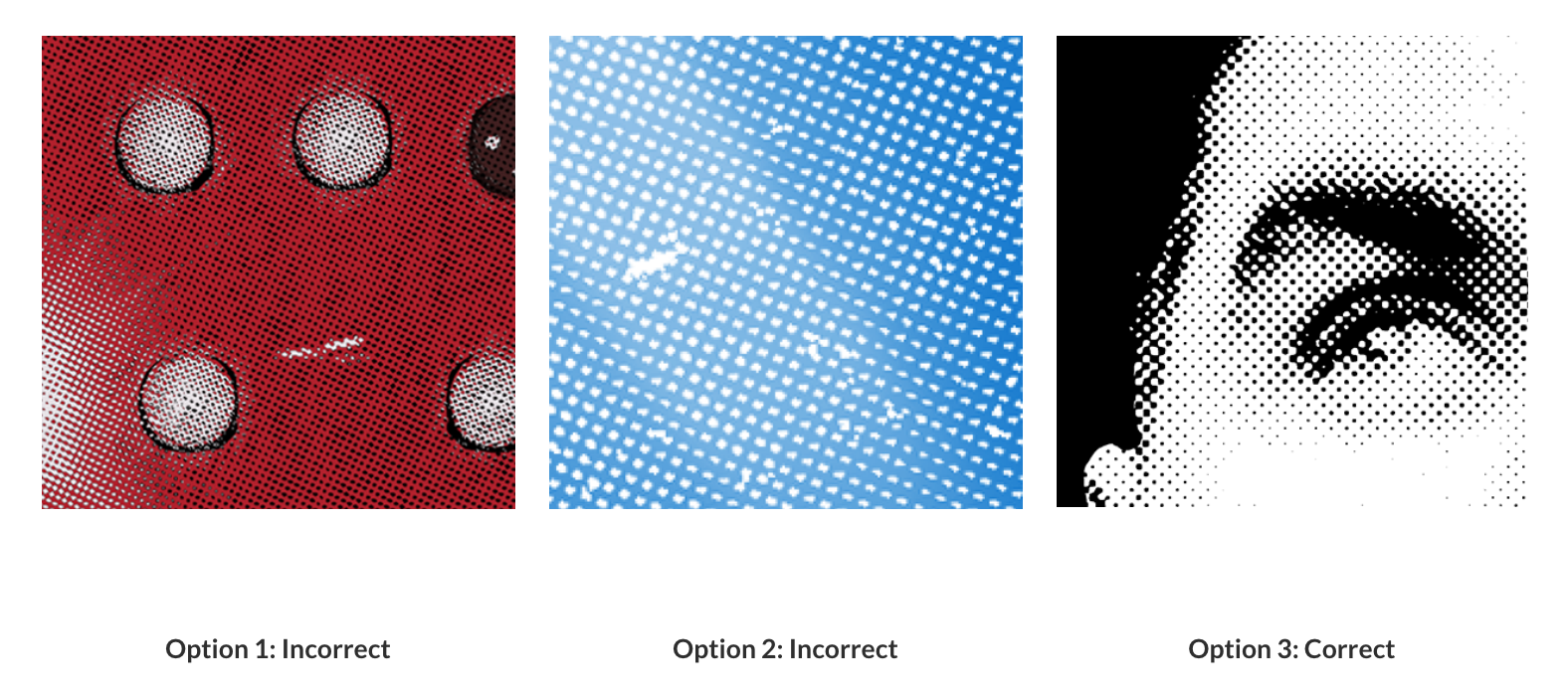Halftones
A Wonderful Illusion
Halftone is a printing technique that simulates a gradient tone through the use of dots varying in size, shape, or frequency. In screen printing, anything that isn’t one solid Pantone color must be created using halftones. Each screen can only print one color, and must either let all of the ink through or none of it, so gradients or shifts in color are created using halftones.

Size and shape
Halftone dots are defined by their shape and DPI, dots per inch. We print elliptical halftones at varying sizes to simulate 100% to 0% information. At around 50% the positive dots become negative dots. The graph below shows a 100% to 0% halftone gradient next to a solid gradient. Notice in the halftone gradient where the black dots become the background to white negative dots. From afar, these gradients look exactly the same to the human eye.

Using halftones in your art
Halftones in art are very popular, often used to create a retro or comic book style. We’ve printed some great shirts like that, but certain halftones in your art can cause us big problems. Moiré and other issues can occur when we run into halftones of halftones.
Halftones of halftones refers to art that comes to us already halftoned and must be halftoned again when we print it. This usually happens when the art is a scanned image of a printed piece. We sometimes receive art that uses halftones as a design choice, this can work under certain circumstances, if the dots are large enough and are all of the same color.

Options 1, 2, and 3 show three types of halftoned art. In Option 1, the halftone dots are too small. The dots only differ slightly in size from our halftone dots, so there will be minimal visual difference in the print, but the print could be subjected to issues such as moiré. Option 2 has larger sized dots, but they are not true halftone dots. There is a variance in lightness and color within each dot. This will cause issue because we will have to halftone all of the values inside the dot, meaning it could be subjected to moiré and other issues. Option 3 shows the proper use of halftone dots in art. The dots are large enough to be printed as if they were circles, and the color is consistent and solid, so we won’t have to use any halftones on our end. Option 3 will print perfectly, without chance of moiré or other issues.



